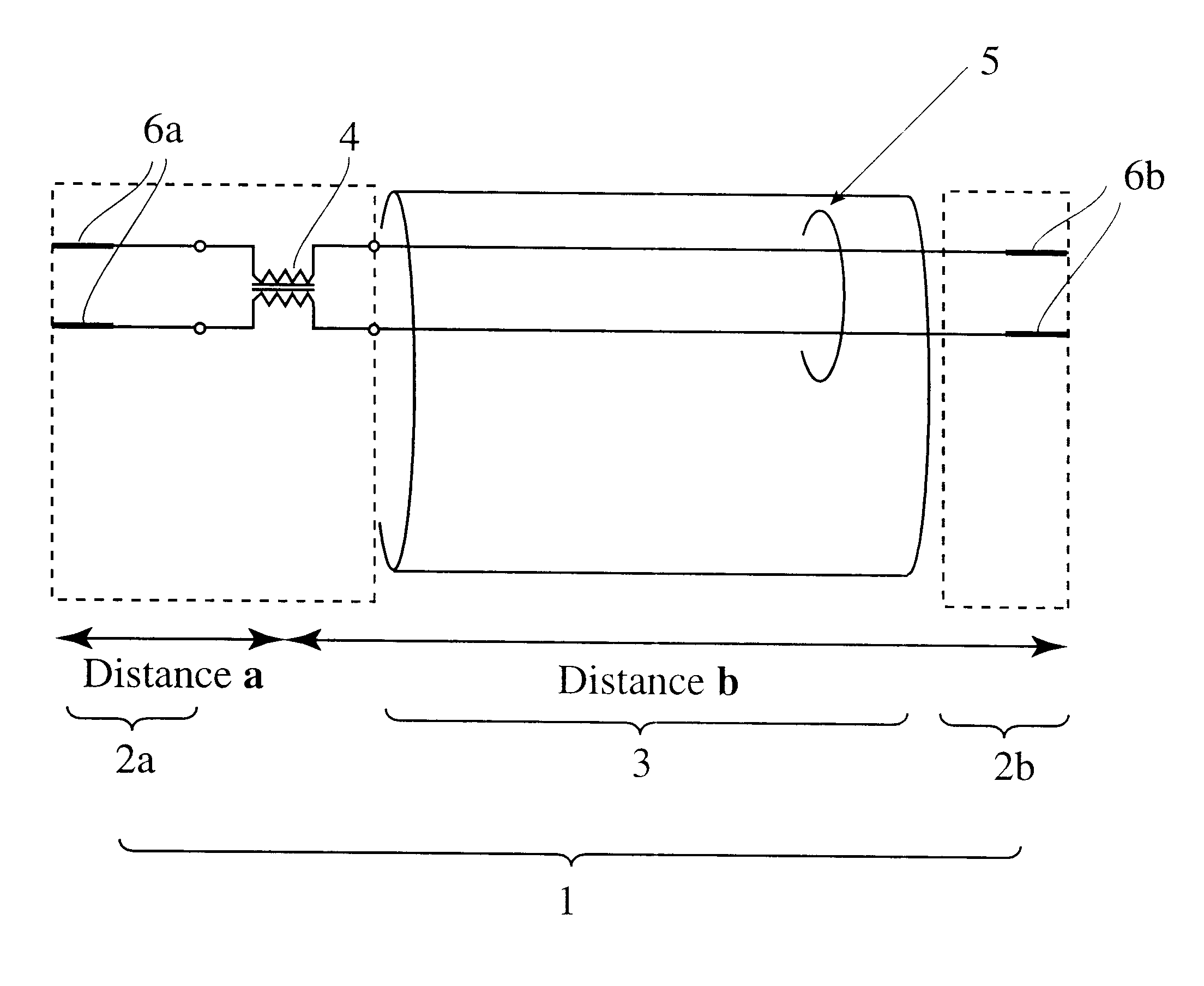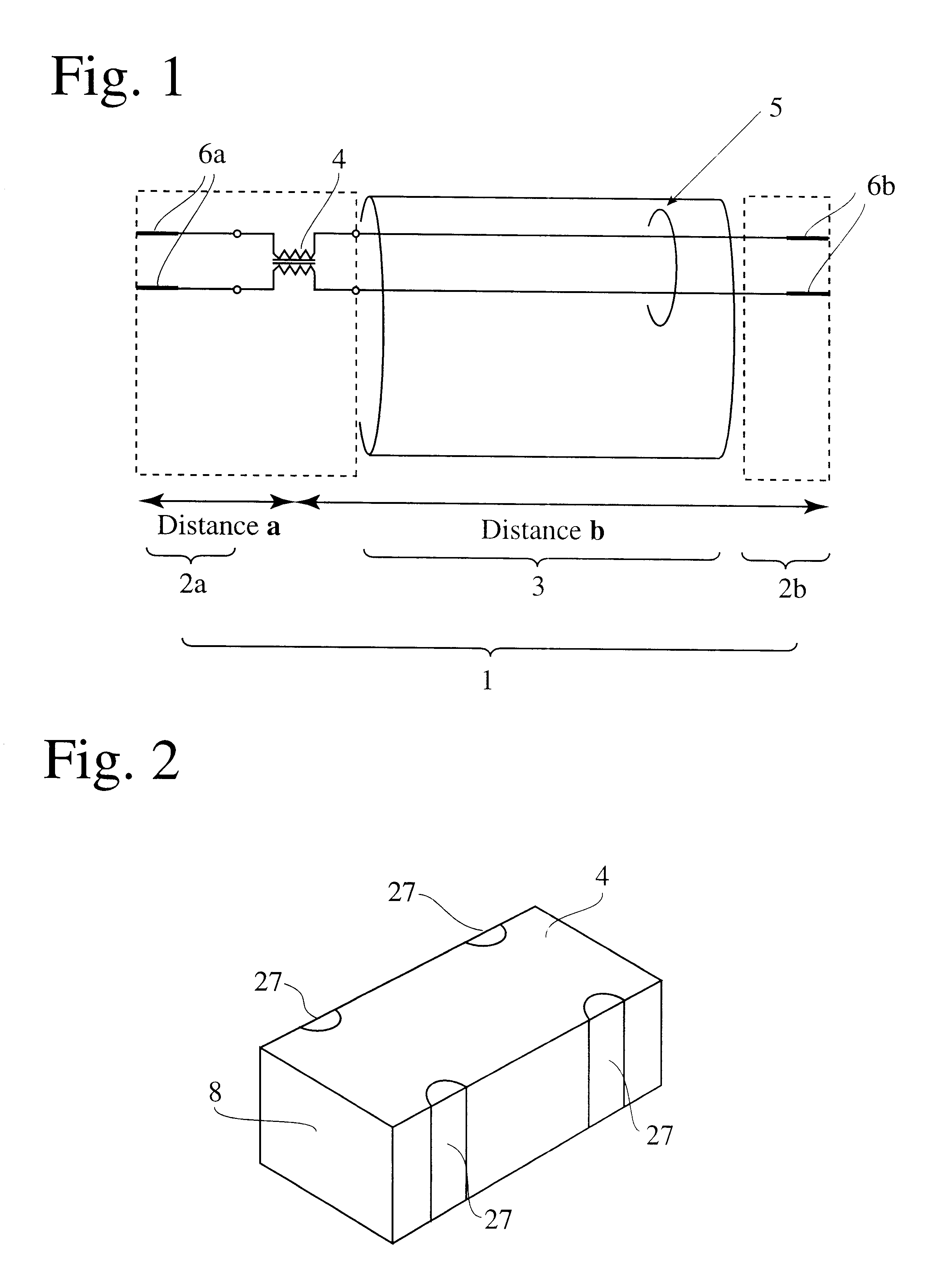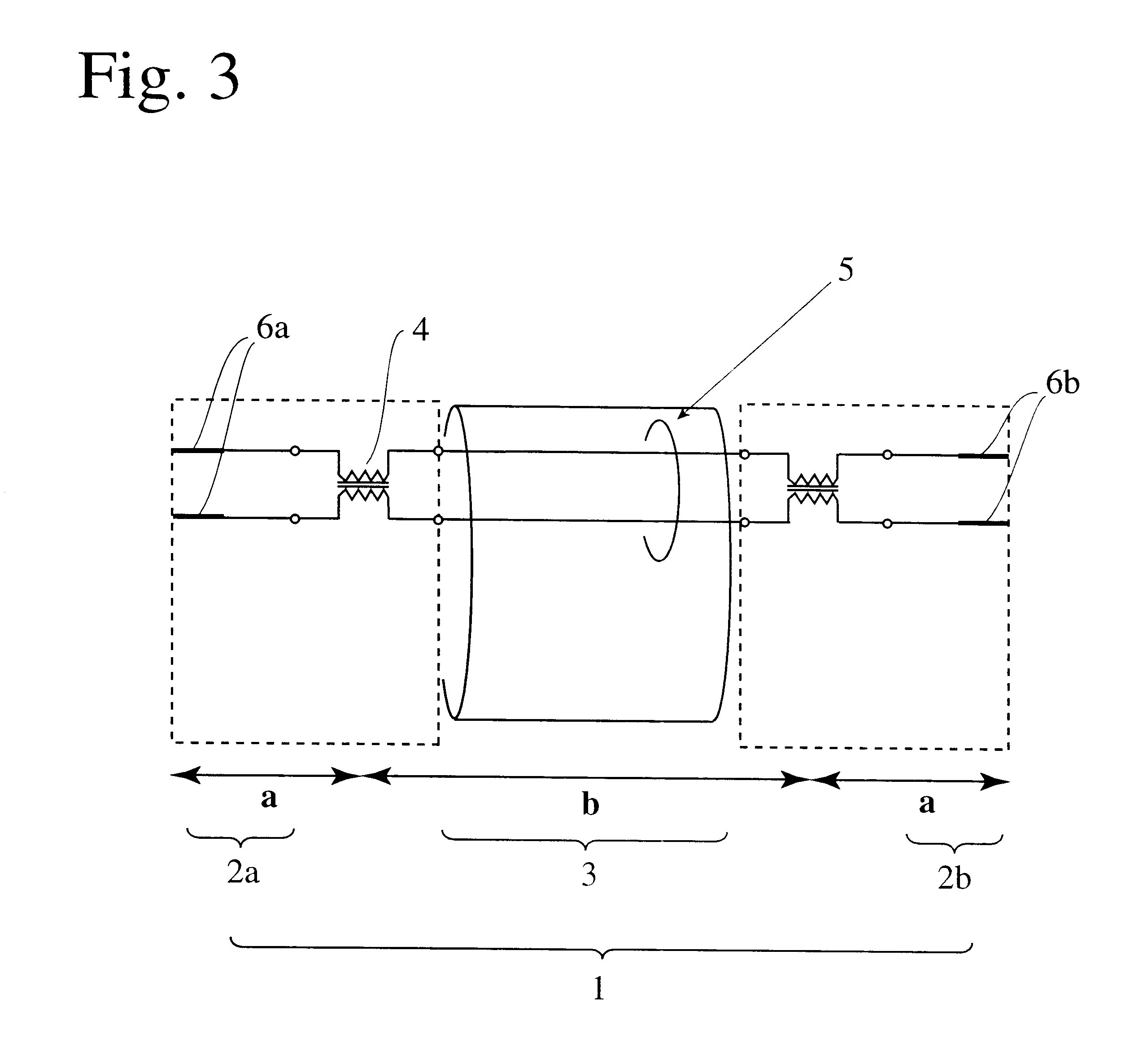Differential transmission cable and joint with specific distances
a transmission cable and specific distance technology, applied in the direction of cable, line-transmission details, coupling device connections, etc., can solve the problems of radiation noise, noise current, radiation noise generation,
- Summary
- Abstract
- Description
- Claims
- Application Information
AI Technical Summary
Benefits of technology
Problems solved by technology
Method used
Image
Examples
example 2
Constitution of Connector
FIG. 9 shows a connector (series-A connector for USB cable) in a differential transmission cable, in which a transmission transformer was mounted. FIG. 10 shows a substrate used in FIG. 9, and FIG. 11 shows another example of a substrate.
In this EXAMPLE, a common-mode choke coil 4, one type of a transmission transformer, was mounted to lands 21 of a substrate 11a, and signal lines 5 and lead lines 12 of the USB cable 3 were connected to the lands 21 of the substrate 11a by soldering. With the lands 21, high reliability was achieved in soldering connection strength of the signal lines 5 and the lead lines 12 to the lands 21, and in soldering connection strength of the lands 21 to the common-mode choke coil 4.
By integrally resin-molding the substrate 11a provided with the cable 3 and the common-mode choke coil 4 except for tip portions of electric power lines 14 and lead lines 12, mechanical and electrical reliability can be improved. In this case, because the...
example 3
Other examples of connectors in the differential transmission cable of the present invention are shown in FIGS. 13 to 16. FIG. 13 shows a housing for a series-A connector of a USB cable. The housing 7b in this EXAMPLE is provided with a positioning projection holder 25a in a site 24 to which a common-mode choke coil is mounted, to prevent defects due to the displacement of the common-mode choke coil at the time of mounting. As long as the positioning projection holder 25a can secure a site into which the common-mode choke coil is inserted, it may have any shape. For instance, if it is in a shape having a hook 25b in an upper portion as shown in FIG. 14, defects due to the displacement of the common-mode choke coil at the time of mounting can drastically be suppressed. Incidentally, the holders 25a, 25b are preferably formed at the time of forming the housing.
After mounting connector terminals 15, 6a to this housing, the common-mode choke coil 4 is mounted to the housing, and signal ...
example 4
Evaluation of Joint
FIG. 17 shows one example of a joint used for connecting a cable to a personal computer. A common-mode choke coil 4 is mounted to a substrate 11a on a female connector 60b, and terminals 6a, 15 of a series-A male connector 60a are soldered to the terminals 6b, 16 of the female connector 60b and the substrate 11a via lead lines 17. With this structure, high reliability in soldering is secured between the lead lines 17 and the common-mode choke coil 4. Next, the male connector 60a, the female connector 60b and the substrate 11a are integrally resin-molded, to assemble a joint with parts such as shield plates, etc. Because the substrate 11a provided with the common-mode choke coil 4 is embedded in a molding portion 13, high reliability is achieved. Further, because housings 7a, 7c of commercially available connectors may be used without modifications, there is no need to produce a special connector for mounting a common-mode choke coil 4 into the joint.
To evaluate th...
PUM
| Property | Measurement | Unit |
|---|---|---|
| distance | aaaaa | aaaaa |
| distance | aaaaa | aaaaa |
| length | aaaaa | aaaaa |
Abstract
Description
Claims
Application Information
 Login to View More
Login to View More - R&D
- Intellectual Property
- Life Sciences
- Materials
- Tech Scout
- Unparalleled Data Quality
- Higher Quality Content
- 60% Fewer Hallucinations
Browse by: Latest US Patents, China's latest patents, Technical Efficacy Thesaurus, Application Domain, Technology Topic, Popular Technical Reports.
© 2025 PatSnap. All rights reserved.Legal|Privacy policy|Modern Slavery Act Transparency Statement|Sitemap|About US| Contact US: help@patsnap.com



